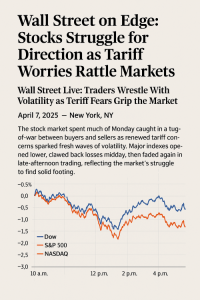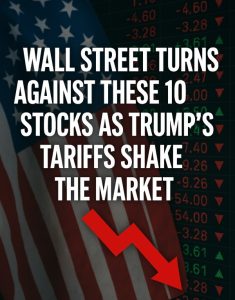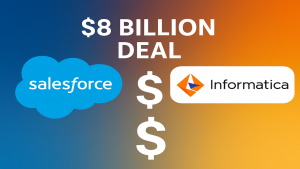Nvidia’s Wild Pre-Earnings Chart Has Everyone Talking—Here’s Why

Nvidia’s Wild Pre-Earnings Chart Has Everyone Talking—Here’s Why
The Hype Train Is Off the Rails
Nvidia (NVDA) has been the poster child of the AI revolution, with its stock surging over 200% in the past year alone. But as the company prepares to drop its latest earnings report this week, there’s one chart circulating online that’s sparking heated debates—and a few laughs—among investors. It’s so absurd, it’s either a flashing warning sign or proof that conventional metrics no longer apply in the age of AI. Let’s break it down.
The Chart That Defies Logic
Imagine a line graph comparing Nvidia’s price-to-earnings (P/E) ratio to other tech giants like Apple, Microsoft, and Tesla. At first glance, it looks like a toddler scribbled on a whiteboard. Nvidia’s P/E—a measure of how much investors pay per dollar of earnings—is hovering around 70x, dwarfing Apple’s 28x and Microsoft’s 35x. Even Tesla, known for its volatile valuation, trails at 45x.
Why is this ridiculous?
- Historical context: Nvidia’s 5-year average P/E is roughly 40x. Today’s 70x suggests investors are pricing in perfection for years to come.
- Earnings expectations: Analysts already project Q1 revenue to hit $24.6B, up 234% year-over-year. The chart implies even those sky-high numbers aren’t enough.
- The “AI Premium”: Bulls argue traditional metrics don’t capture Nvidia’s dominance in AI chips. Bears see a bubble waiting to pop.
The AI Gold Rush: Justified or Delusional?
Nvidia’s GPUs power everything from ChatGPT to self-driving cars, giving it a near-monopoly in the AI hardware space. Demand is so fierce that CEO Jensen Huang recently claimed companies are buying its chips “as fast as we can ship them.” But here’s the catch: Can any company live up to this level of hype?
- Supply vs. Demand: Rivals like AMD and Intel are racing to catch up, but Nvidia still controls ~80% of the AI chip market.
- Software Ecosystem: CUDA, Nvidia’s proprietary platform, locks developers into its hardware—a moat that’s hard to breach.
- The China Factor: Export restrictions have forced Nvidia to create diluted chips for the Chinese market, slicing into potential revenue.
What Wall Street Isn’t Saying Out Loud
Behind the chart’s steep climb are whispers of FOMO (Fear of Missing Out). Retail investors and institutions alike are piling into NVDA, terrified of being left behind if AI adoption accelerates. But there’s a darker side to the frenzy:
- Short-term traders vs. long-term holders: Over 25% of Nvidia’s trading volume comes from options, signaling a playground for speculation.
- Valuation math doesn’t add up: To justify its P/E, Nvidia would need to double its earnings annually for the next three years. Possible? Maybe. Probable? Debateable.
The Bigger Picture: Earnings Could Be a Reality Check
Nvidia’s report this week isn’t just about numbers—it’s a litmus test for the entire AI narrative. If results meet or exceed forecasts, the “ridiculous” chart might suddenly look prescient. But any hint of slowing growth or margin pressure could trigger a sell-off reminiscent of the 2022 tech crash.
Key things to watch:
- Data Center Revenue (projected to jump 400% YoY).
- Guidance for Q2: Will demand hold up amid global chip shortages?
- Inventory Levels: Are clients over-ordering to hoard GPUs?
Bottom Line: Betting on Nvidia Isn’t for the Faint of Heart
Love it or hate it, Nvidia’s pre-earnings chart captures the euphoria—and irrationality—of today’s market. The stock isn’t just a company; it’s a proxy for AI’s future. But as any seasoned investor knows, trees don’t grow to the sky. Whether you’re buying, selling, or just watching, buckle up. This earnings report could be a wild ride.






